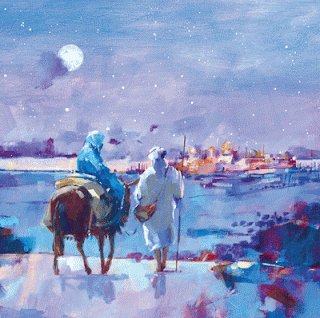They talk of shepherds, wise men and a babe in a cradle, of bleak winters, towns called Bethlehem and silent nights. Nearly everyone knows a collection of Chistmas Carols. From bastardised versions in school assembly halls to choirs in shopping centres, TV and radio stations or church services. At the festive time of the year it is impossible to do without them but who are the artists behind these well known Carols?
The question came to me during Saint Andrew’s yearly Parish Church Festival of Lessons and Carols as I glanced down at Once in Royal David’s City. A poet myself, I am fascinated to discover that the carol was originally written as a poem by an Irish poet and hymn writer Cecil Frances Alexander. The carol was first published in 1848. In 1849 it was set to music by a British songwriter and organist Henry Gauntlet.
‘Once in Royal David’s City
Next we have Silent Night (1816) the words were originally written in Austrian by a Roman Catholic priest named Joseph Mohr. In 1818 Franz Xaver Gruber, an Austrian headmaster and organist of a primary school in Arnsdorf was asked by Mohr to set a poem he had written to music. Un fortunately that Christmas the organ was out of service so Gruber arranged the carol Stille Nacht for guitar.
In 1859 second Bishop of Florida John Freeman Young translated the carol into English version we are familiar with today.
Christina Rossetti is known for her poems ‘Goblin Market’ and a love poem entitled ‘Remember’. She is also remembered for the lyrics to In the Bleak Midwinter which was written around 1870 following a request from a magazine to pen a Christmas poem. The carol was set by Gustav Holst in 1906 and by Harold Edwin Darke in 1909. Darke’s setting was deemed best Christmas Carol by experts in 2008.
The tune of Adeste Fideles or O Come all ye Faithful is accredited to John Francis Wade who lived much of his life amongst exiled English Catholics in France, having escaped the Jacobite rising (1745). He was both a hymnist and teacher of music.
It is not known for certain who wrote the text for this carol but various orders of monks have been considered. The English words as we know them today are a translation from Latin by both William Oakaley and Thomas Brooke, first published in 1852.
Stood a lowly cattle shed…’
Next we have Silent Night (1816) the words were originally written in Austrian by a Roman Catholic priest named Joseph Mohr. In 1818 Franz Xaver Gruber, an Austrian headmaster and organist of a primary school in Arnsdorf was asked by Mohr to set a poem he had written to music. Un fortunately that Christmas the organ was out of service so Gruber arranged the carol Stille Nacht for guitar.
In 1859 second Bishop of Florida John Freeman Young translated the carol into English version we are familiar with today.
Christina Rossetti is known for her poems ‘Goblin Market’ and a love poem entitled ‘Remember’. She is also remembered for the lyrics to In the Bleak Midwinter which was written around 1870 following a request from a magazine to pen a Christmas poem. The carol was set by Gustav Holst in 1906 and by Harold Edwin Darke in 1909. Darke’s setting was deemed best Christmas Carol by experts in 2008.
The tune of Adeste Fideles or O Come all ye Faithful is accredited to John Francis Wade who lived much of his life amongst exiled English Catholics in France, having escaped the Jacobite rising (1745). He was both a hymnist and teacher of music.
It is not known for certain who wrote the text for this carol but various orders of monks have been considered. The English words as we know them today are a translation from Latin by both William Oakaley and Thomas Brooke, first published in 1852.
Oh come all ye faithful
Joyful and triumphant…’
‘In the bleak midwinter
frosty winds made moan…’
‘Silent Night, holy night
All is Calm, all is Bright…’


No comments:
Post a Comment